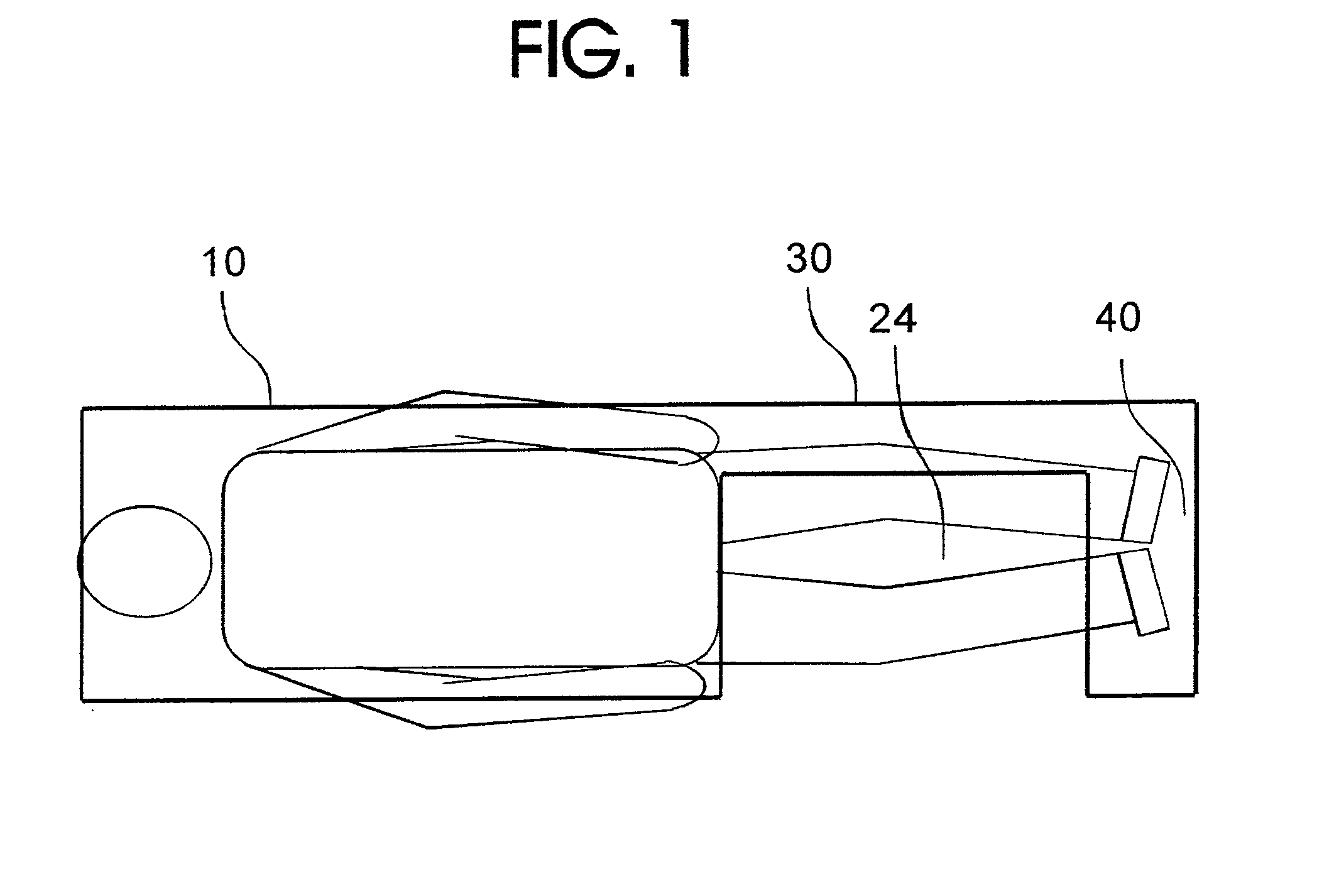Supine patient support for medical imaging
a patient support and medical imaging technology, applied in the field of patient beds, can solve the problems of affecting the patient's health, affecting the operation of the patient, and unable to easily control the procedure,
- Summary
- Abstract
- Description
- Claims
- Application Information
AI Technical Summary
Benefits of technology
Problems solved by technology
Method used
Image
Examples
Embodiment Construction
)
[0029]A medical imaging system or imager 2, such as shown in FIGS. 6-8, has an aperture, opening, window or other accessible volume or area 28 which in turn contains or leads into an imaging volume 4 into which a patient is moved during an imaging procedure. The data acquired by the imager 2 is used to create a two- or three-dimensional image of the organ or area of interest of the patient being examined. In accordance with the present invention, a movable stretcher 6 which may have an elevating portion is used initially to support a tabletop 10 which in turn supports a supine patient who may eventually be advanced, along with the tabletop 10 into the imaging volume 4.
[0030]During an imaging or interventional procedure, a physician, technician or other operator of the imaging device may position a number of devices inside the tissues which are under examination. This may include biopsy needles, biopsy needle guides 16 and trans-rectal MR imaging coils 18, as shown in FIGS. 4 and 5....
PUM
 Login to View More
Login to View More Abstract
Description
Claims
Application Information
 Login to View More
Login to View More - R&D
- Intellectual Property
- Life Sciences
- Materials
- Tech Scout
- Unparalleled Data Quality
- Higher Quality Content
- 60% Fewer Hallucinations
Browse by: Latest US Patents, China's latest patents, Technical Efficacy Thesaurus, Application Domain, Technology Topic, Popular Technical Reports.
© 2025 PatSnap. All rights reserved.Legal|Privacy policy|Modern Slavery Act Transparency Statement|Sitemap|About US| Contact US: help@patsnap.com



